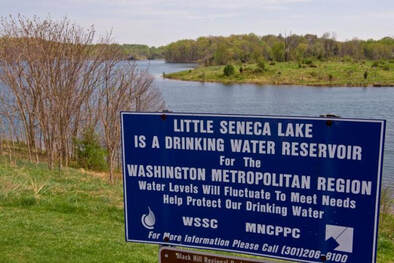Montgomery’s Planning Board, under the leadership of Chair Casey Anderson, voted to allow developers to increase impervious surfaces (concrete/asphalt) in the Ten Mile Creek Watershed in violation of the Master Plan. This vote was taken early during the Covid 19 quarantine shut down, with no public participation (an action criticized by the County Executive). We are grateful to Friends of Ten Mile Creek for alerting us to this issue.
Next the final vote will be taken by the County Council. Your action is needed to put this vote on hold until the Covid 19 pandemic is over to ensure full public participation. Further, urge the Council to reject this Zoning Text Amendment as a violation of the Ten Mile Creek Limited Master Plan Amendment and its main enforcement regulation – the caps on impervious surfaces in the Clarksburg Environmental Overlay Zones.
In 2014 MCA, Audubon Naturalist Society and 30+ other local civic organizations partnered with local leaders to pass a Clarksburg Master Plan to guide development in Clarksburg while protecting fragile Ten Mile Creek - a pristine stream that is part of the backup water source for 4.3 Million in the DC region. This plan set hard limits on the amount of impervious surface allowed in the development near the creek based on water quality science.
Hard fought science based protections for Ten Mile creek are being eroded by the Planning Board and Developers: A cap on impervious (paved) surfaces was set as part of the Clarksburg Master Plan in 2014 but now the developers are coming back and asking that the cap not apply to the bike lanes they are required to build. In response, on March 26 the Montgomery County Planning Board voted to recommend that the County Council amend the Zoning Text Amendment (ZTA) in order to exempt impervious surfaces of planned bikeways from the Ten Mile Creek protections. Scientists tell us that each addition of pavement to this sensitive watershed threatens both the quality of Ten Mile Creek, and the health of our region’s only nearby back-up drinking water supply, Little Seneca Reservoir.
Both the science based caps that limit runoff to the creek and the requirement for bike lanes to benefit local residents were established in 2014 by the County Council and Planning Board. Because Ten Mile Creek is a unique, high-quality stream and drinking water supply, the amount of runoff the stream can take remains unchanged and last we checked, water continues to run down hill. The caps on impervious surfaces must remain in force as well.
The choice is not between clean water and bike paths. We can, and must, have both. The mandate of the 2014 Clarksburg Master Plan Amendment set clear caps to protect the creek. Another mandate was to install bike paths. Developers have known this from the very beginning, but are pushing back to increase their bottom line. We must insist that they achieve both goals while staying under the impervious cap.
In Montgomery County, we demand that development proposals honor Master Plan mandates especially regarding important environmental and community safeguards. There should be no end runs for developers. Any proposed weakening of these protective limits should be rejected.
Take a moment to add your name to a letter to the Council right here.







